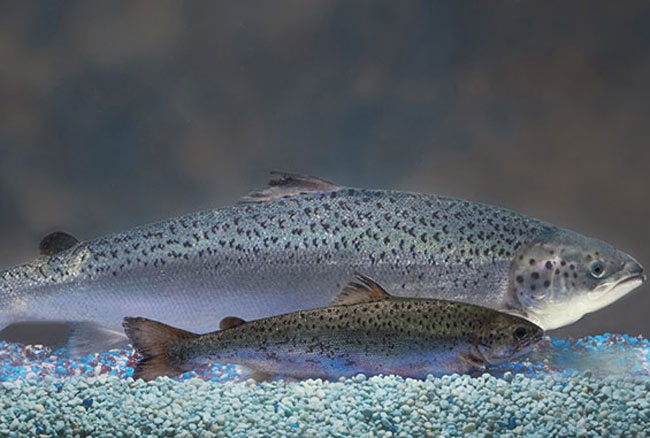FDA Must Take Wider Look at GM Salmon, Economists Say

Genetically modified salmon that grow to full size quicker than their wild cousins could make the fish a cheaper part of a healthy diet for more Americans. But it may also have environmental consequences that accompany any possible expansion of fish farming. The U.S. Food and Drug Administration's decision-making about whether or not to approve the fish for market needs to include those possibilities, economists say.
Here's what is known so far: The new salmon created by AquaBounty Technologies does not pose new human health threats for consumers compared with typical salmon, according to experts. They also testified before FDA panels about the fairly small risk of any GM salmon escaping and mixing in with wild salmon – although some said that bigger studies are needed to fully address direct health and environmental risks.
But the FDA's focus has so far ignored how the so-called AquaAdvantage salmon could affect both salmon production and consumption. That may have positive and negative effects on human health and the environment, according to Martin Smith, an associate professor of environmental economics at Duke University's Nicholas School of the Environment.
"The GM salmon is one of the breakthroughs that is likely to lower the cost of production, and there's probably going to be a whole series of innovations like this that can transform human consumption of both marine and terrestrial species," Smith said.
Smith and his colleagues argue that the FDA needs to set a precedent for cases beyond the GM salmon, or else the federal agency risks ignoring the broader market impacts of such products. Their policy paper is detailed in the Nov. 19 issue of the journal Science.
Faster, better, cheaper?
AquaBounty's Atlantic salmon, announced in September, has additional DNA from both Pacific Chinook salmon and an eel-like fish, which allows it to keep pumping out growth hormone year-round. The modified salmon doesn't grow bigger than normal salmon, but its hyper-growth rate means that it can go to market sooner while consuming less feed.
Sign up for the Live Science daily newsletter now
Get the world’s most fascinating discoveries delivered straight to your inbox.
Such salmon are cheaper to grow in aquaculture fish farms – something that can have huge consequences. Falling costs based on technological innovation have already tripled salmon production in aquaculture between 1995 and 2007, and lowered salmon prices despite a growing demand for the fish.
That demand rides the health benefits of consuming salmon, which are rich in omega-3 fatty acids that have been found to reduce coronary heart disease and aid development of young brains inside the womb. American adults who currently eat no fish could cut their risk of coronary death by 36 percent with just one serving of salmon per week, according to a 2006 study in the Journal of the American Medical Association.
Cheaper salmon for all sounds good so far. But Smith and his colleagues also pointed to the environmental concerns regarding any boom in fish farming. Effects could include local pollution and possibly more harvesting of wild fish that become the fish meal and oil to feed the hungry salmon.
Salmon farming alone already uses 40 percent of the world's fish oil production, and each salmon currently requires three times its weight in feed. The new GM salmon may consume less food individually, but could gobble down more of the wild fish stock overall if producers raises millions upon millions of them.
Making a decision
There is also no surefire guarantee that lowering the relative price of salmon would automatically mean a healthier public, even if it represents a sure economic gain for moms and dads buying dinner. Americans could buy healthier foods to put on the table – or they could just as easily spend the extra money on unhealthy food products.
"If you lower the price of some other animal protein, consumers have more money to spend [on] other goods – which is a good thing," Martin told LiveScience. "But they might also consume more foods that are high in saturated fat."
Martin explained that the FDA has a responsibility to look at the broader environmental impacts under the National Environmental Policy Act, despite the agency's narrow interpretation of "safety" in the GM salmon case. He added that the agency might also need broader authority and a bigger budget granted by Congress to get the job done.
Either way, Martin emphasized that the FDA needs to set a precedent with this case so that it can properly gauge all the health and environmental impacts of future products – even if the agency ends up reaching the same decision without doing the broader analysis of health and environmental impacts.
"If I had to bet in this case, I'd say they're likely to approve the product, and it's likely the net benefit could come out in favor of approving the product," Martin said. "But then again, you can't say that without doing the analysis."










